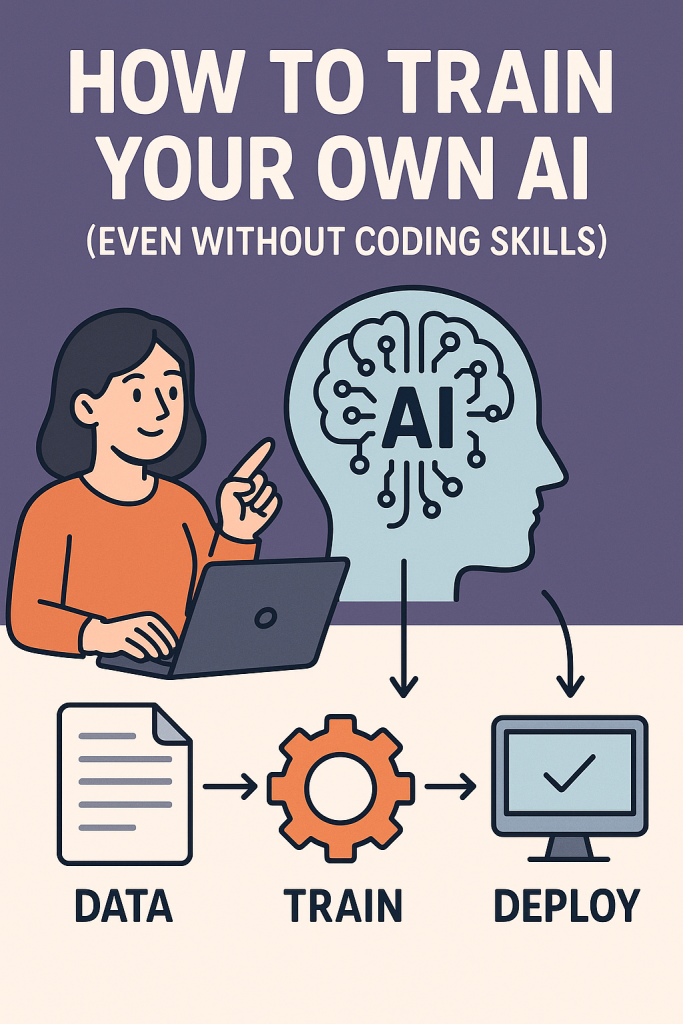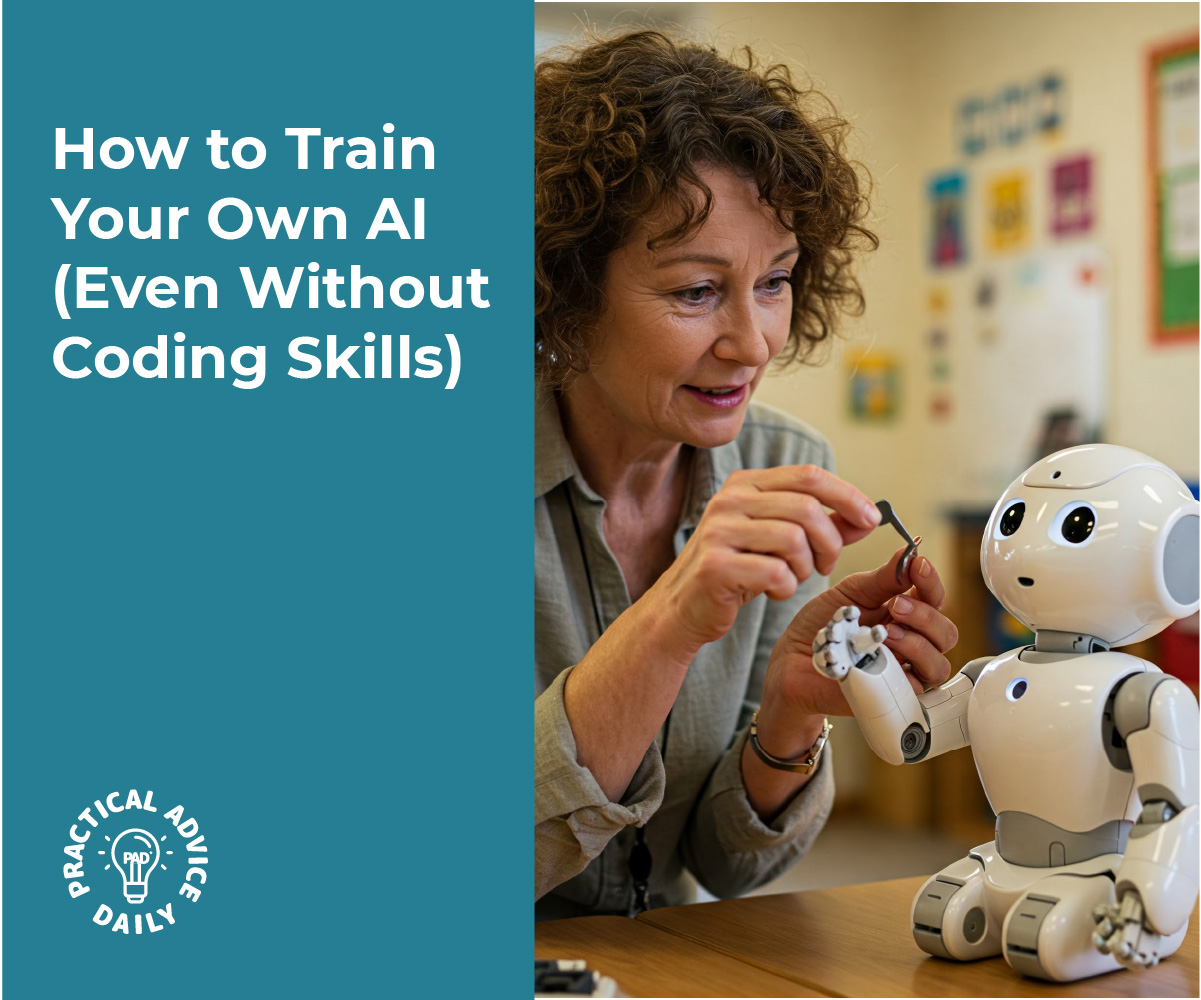Imagine teaching a computer new tricks – that’s what training an AI (artificial intelligence) is all about, and guess what? You don’t need to be a tech expert to do it! In this guide, we’ll show you how anyone can create a simple AI model using easy, no-code tools. We’ll focus on Google’s free Teachable Machine and similar platforms that let you train AI by example. By the end, you’ll see how to teach AI to recognize images, sounds, or even simple gestures through straightforward steps.
Key Takeaways
- You don’t need to know coding to train a basic AI. Friendly tools handle the complex parts.
- Tools like Google’s Teachable Machine let you teach the computer by showing examples (photos, sounds, or poses).
- The process is simple: collect examples, click Train, and test the AI with new inputs.
- The training happens in your own browser or app, keeping your data private.
- Anyone can build a custom AI with some practice and creativity.
Building an AI With Teachable Machine
One of the easiest ways to train your own AI is using Google’s Teachable Machine, a free tool that runs in your web browser. You don’t have to write code or install anything. It’s designed so teaching the AI feels as easy as showing pictures to a friend.
Here’s the simple idea: you tell Teachable Machine what to learn by giving it examples. For instance, if you want it to tell apples from oranges, create two categories (labels) named “Apple” and “Orange.” Then add pictures to each category (put apple photos in the Apple category, orange photos in the Orange category). When your examples are ready, click Train. Teachable Machine will automatically learn from your photos.
After a short wait, test the result: point your webcam at a new object or upload another image, and Teachable Machine will guess which class it belongs to. It even shows how sure it is (for example, “Apple: 92%”). If it gets it wrong, that’s okay! Just add more example photos and train again.

Step-by-Step Example
Try this yourself with Teachable Machine:
- Open Teachable Machine. Use a desktop browser (Chrome or Safari) and go to the Teachable Machine site.
- Set up classes. Choose “Image Project”. Give each class a label, like “Cat” and “Dog”.
- Add example images. For each class, click Upload or use Webcam to add photos. It’s good to have many photos (try 20+ per class) taken from different angles or lighting.
- Train the model. Click Train Model. The AI will learn from your examples (stay on the page until it finishes).
- Test it out. Activate the webcam or upload a new photo. Teachable Machine will predict the class in real time.
- Improve as needed. If the AI makes mistakes, add more example images or better-quality photos, and train again.
(Optional) If you want to keep your model, you can click Export Model after training. Teachable Machine lets you download it for use in apps or websites, but this step is optional for learning.
That’s it! You’ve trained an AI to recognize images without any coding. Teachable Machine also supports audio and pose projects. You could record sounds (like clapping versus snapping) or capture different poses (like “thumbs up” vs. “thumbs down”) and train the model the same way.
Other No-Code AI Tools
Besides Teachable Machine, there are other no-code AI tools. For example, Microsoft’s Lobe is a free desktop app (Windows/Mac) that works similarly. In Lobe, you import and label images of the things you want to recognize. The app then automatically picks the best AI model and trains it for you. Lobe breaks the process into three steps: collect and label images, train the model, and test/improve.
With Lobe, you click to label your images and the app learns from them. It runs on your own computer, so nothing is sent over the internet. For example, someone could label photos of “ripe fruit” and “unripe fruit” in Lobe, train the model, and then the AI would be able to distinguish ripe from unripe fruit in new photos. The friendly interface shows when the AI is confused, letting you easily correct mistakes.
There are other platforms too, but Teachable Machine and Lobe are among the easiest for beginners.
Final Thoughts
Now you see that creating your own AI can be fun and straightforward. With tools like Teachable Machine or Lobe, training an AI is as easy as a simple step-by-step process. You just show the computer examples of what you want it to learn, let it train, and test it.
It might sound technical, but in practice it feels like teaching by example – something anyone can do. Try training an AI to recognize your pets, favorite flowers, or even your own gestures. The more you play with it, the better you’ll get.
Have confidence and keep experimenting. You might be surprised how smart you can make your AI models with just everyday photos and sounds. Happy teaching!
